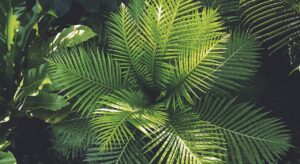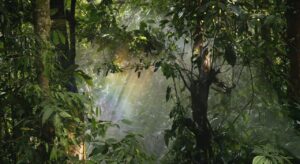Fungi are diverse in structure; among them there are microscopic forms with bodies represented by one or more cells, and larger organisms. Commonly mushrooms are usually called fruiting bodies of some representatives of the kingdom of mushrooms (cap mushrooms).
The vegetative body of a mushroom consists of long thin threads – hyphae (from the Greek hyphe [hyphe] – “tissue, web”). Hyphae have apical growth and can branch to form a dense interwoven network – mycelium (from the Greek mykes [mykes], “mushroom”), or fungus. It is immersed in the substrate (soil, wood, tissues of a living organism) or located on its surface and serves to absorb water and nutrients. The growth rate of mycelium depends on environmental conditions and may reach several centimeters per day.
The fruiting body is a specialized reproductive structure formed from the intertwined mycelial hyphae. The function of the fruiting body is to form and disperse spores. Not all fungal species are capable of forming fruiting bodies. Fungi that form fruiting bodies belong to the group (subclass) of higher fungi.
Some groups, such as most flathead mushrooms, have a perennial mycelium, while others have an annual mycelium. Since the hyphae grow at their tips, the fungus grows centrifugally. Its oldest part in the center gradually dies off, and the mycelium forms a ring. In addition, some species of fungi secrete substances that inhibit plant growth, and sparrows form on the grass cover around them.
Such ring-like arrangements of fruiting bodies of mushrooms are called witches’ circles. Myths and legends of many nations say that in these places danced roundelays unclean force – elves, forest spirits, witches.
Nutrition of fungi
All fungi are heterotrophic organisms, meaning they need readily available organic matter.
Fungi can be divided into four groups according to the sources of organic matter they use.
- Saprotrophic fungi feed on dead organic matter by decomposing animal and plant remains. This makes them the most important ecological group of decomposers – decomposers of organic substances, converting them into an inorganic form (mineral salts and water) available to the producers (plants).
Saprotrophic fungi are abundant in soil, especially in forest litter. This group also includes the oyster mushrooms and mushrooms cultivated on organic substrates, as well as yeasts and molds.
- Parasitic fungi penetrate into animal and plant organisms and feed at their expense. Sometimes the hyphae of such fungi are able to grow inside the cells of the host organism and absorb nutrients.
Predatory fungi actively catch their prey (protozoa and small invertebrates) by means of modified hyphae, forming suction cups and catching loops.
- Symbiotic fungi enter into symbiosis with various autotrophic organisms (lower and higher plants), receiving organic substances from them and supplying them with mineral nutrition in return. Since the absorption area of the fungal hyphae is much larger than that of the roots, the plant receives much more mineral matter, which allows it to grow more actively. The plant, in turn, gives part of the carbohydrates – products of photosynthesis – to the mushroom body.
Molecules of organic substances that make up living organisms and their residues cannot pass through the cell wall inside the mushroom cells, so the hyphae secrete digestive enzymes into the substrate in which the fungal mycelium develops. These enzymes break down organic matter to low molecular weight compounds that the fungus can absorb with its surface. This type of nutrition is called osmosis (from the Greek osmos [osmos] “push, pressure” and trophe [trophae] “food”).
Thus, external digestion is characteristic of fungi.
Reproduction of fungi
Most mushrooms are characterized by asexual and sexual reproduction.
Asexual reproduction in different species can be carried out in different ways:
- by multicellular or unicellular parts of the mycelium (vegetative reproduction, characteristic of many species);
- By budding (characteristic of yeasts);
- spores (asexual reproduction proper, inherent in most species).


